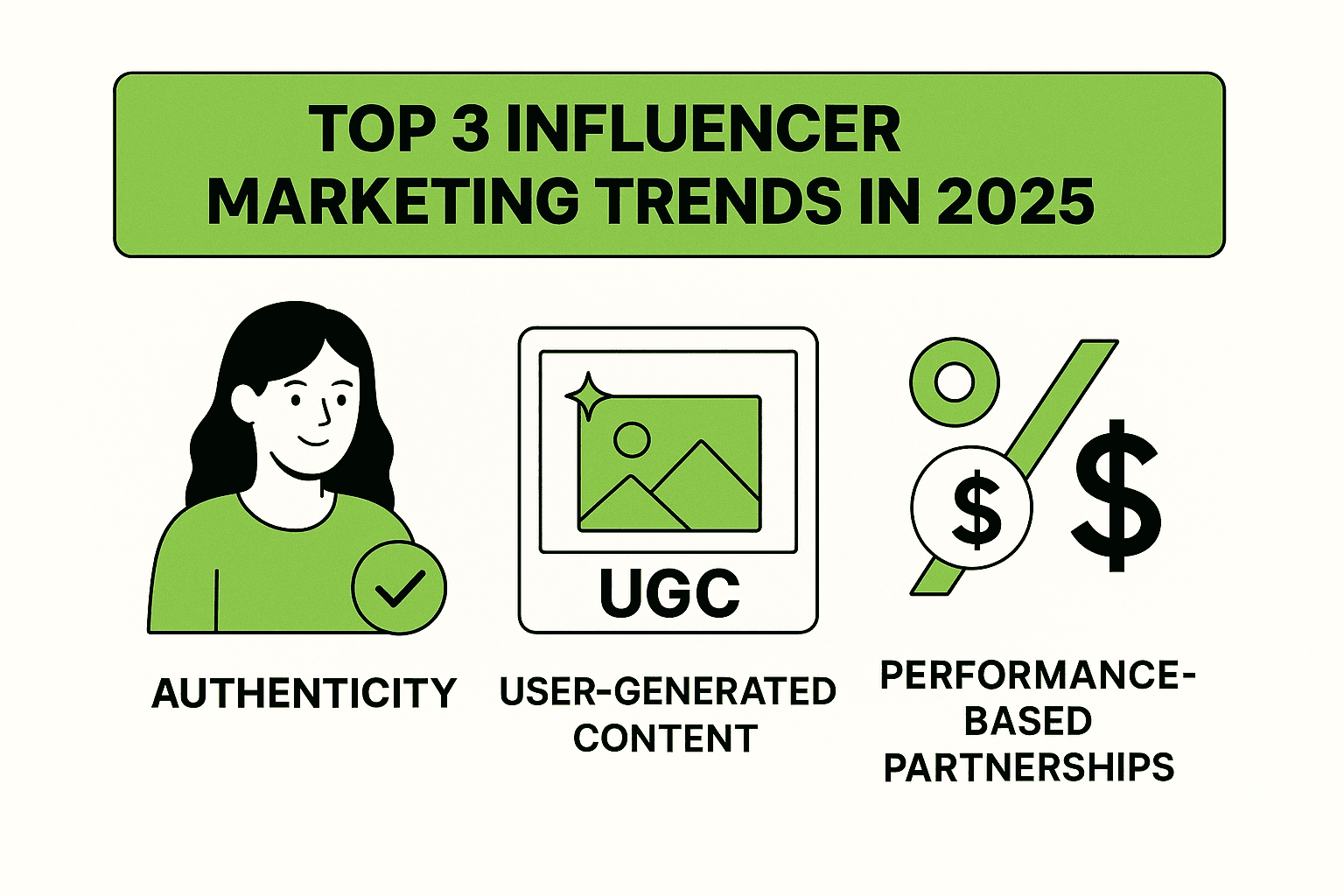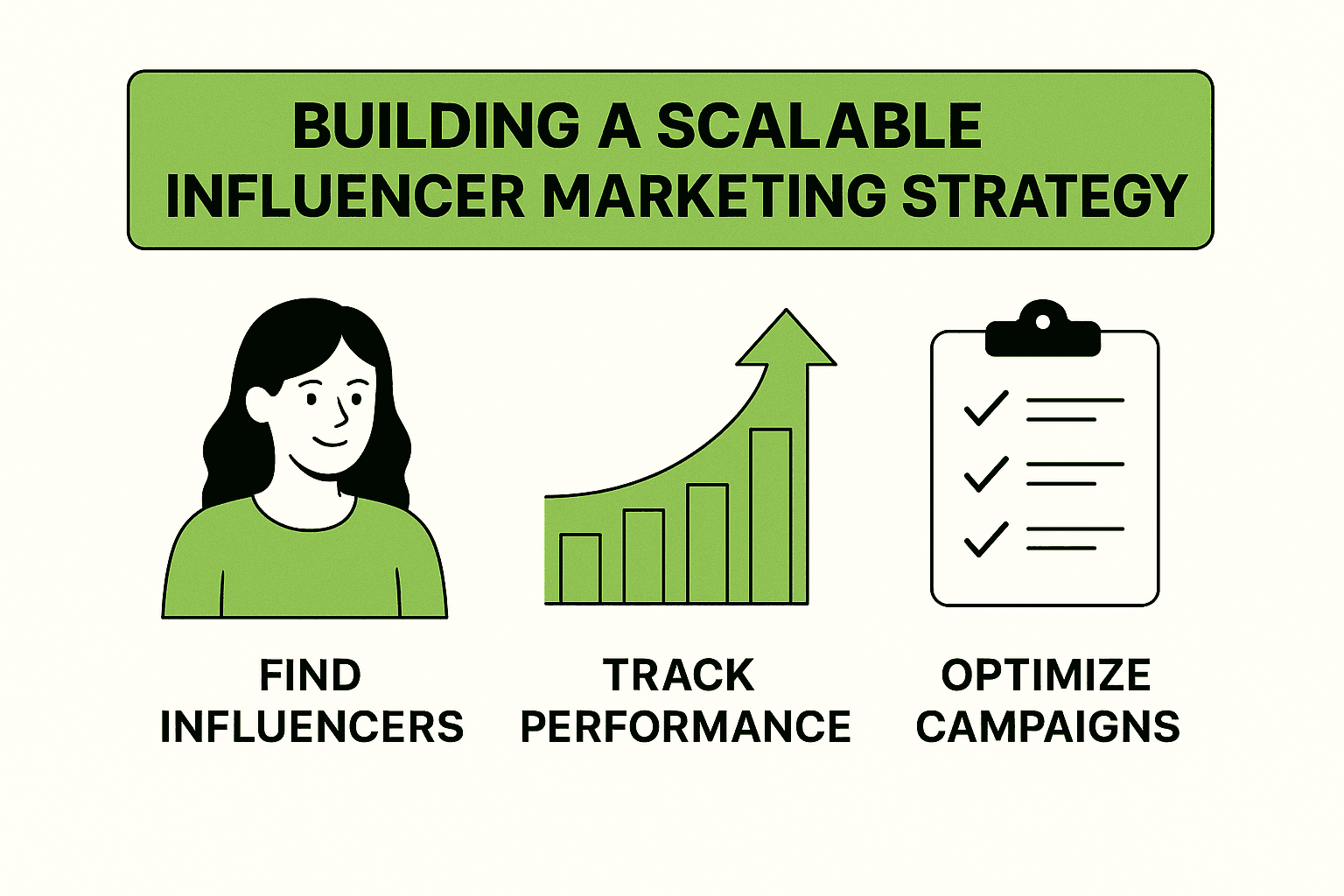Marketing
Influencer Marketing in 2025: E-commerce Blueprint
Trends in influencer marketing are reshaping the e-commerce landscape at an unprecedented pace. The numbers tell the compelling story, with the industry projected to reach a staggering $32.55 billion by 2025, up from $24 billion in 2024. Why is this growth so explosive? Because influencer marketing works. 84% of brands confirm its effectiveness in driving consumer engagement and sales.
Influencer marketing statistics reveal that social media has now surpassed paid search as the world's largest advertising channel, commanding $247.3 billion in global ad spend. This transformation presents massive opportunities for e-commerce brands and DTC brands alike. Brands receive an average return of $4.12 for every $1 spent on influencer campaigns on Instagram. Marketing through social media has indeed become essential. With 63% of consumers likely to buy products from influencers they trust.
Now, we'll explore how the influencer marketing landscape is evolving for 2025. Why specific strategies are gaining traction, and what concrete steps your brand can take to capitalize on these shifts. Whether you're new to creator partnerships or looking to optimize your existing approach, these insights will help you build an effective blueprint for e-commerce success.
The rise of influencer marketing in e-commerce
E-commerce businesses are rapidly adopting influencer marketing as a cornerstone strategy. This shift stems from a fundamental truth: consumers increasingly make purchasing decisions based on recommendations from people they trust online.
Why influencer marketing matters in 2025
Authenticity has become the new currency in the digital marketplace. Today's consumers, particularly millennials and Gen Z, actively seek genuine content and relationships with brands. Studies show that 63% of younger consumers prefer purchasing from influencers who feel relatable. This preference exists because 69% of consumers trust product recommendations from influencers, compared to only 38% who find conventional advertisements credible.
Furthermore, influencer marketing directly impacts revenue. Businesses consistently earn $5.78 for every dollar spent on influencer marketing. With some exceptional campaigns generating up to $18 in return. This impressive ROI explains why the industry is projected to reach $32.55 billion globally by 2025.
Key influencer marketing statistics for e-commerce brands
The numbers behind influencer marketing tell a compelling story for online retailers:
More than half (57.6%) of brands working with influencers operate e-commerce stores
86% of consumers make purchases inspired by influencers at least once yearly
58% of U.S. shoppers reported buying products they discovered on social media
Instagram remains the top platform for influencer marketing, with 57% of brands preferring it
E-commerce businesses find influencer marketing particularly effective because online stores can seamlessly connect with creators worldwide. This accessibility enables influencers to easily link to stores without geographic limitations.
How DTC brands are shifting budgets to creators
Direct-to-consumer brands are dramatically reallocating their marketing resources toward influencer partnerships. According to recent data, 26% of marketing agencies and brands now dedicate more than 40% of their marketing budgets to influencer collaborations.
Major corporations exemplify this trend. L'Oréal has publicly committed to spending 50% of its media budget on influencer and content marketing by 2025. Similarly, PepsiCo has redirected 30-40% of its digital spending toward creator-led campaigns. They found it delivers superior results among younger demographics compared to traditional advertising.
Nevertheless, many DTC brands are evolving their approach. Instead of relying solely on high-cost macro-influencers, companies like Youthforia and Apothekary are finding success with micro-influencers who deliver higher engagement rates.
Top 3 influencer marketing trends in 2025

Nano and micro-influencers dominate engagement
Smaller creators are delivering outsized results. Currently, 88% of TikTok influencers and 76% of Instagram influencers are nano-influencers with less than 10,000 followers. What makes them so valuable? Nano-influencers on TikTok achieve an impressive 10.3% engagement rate, over three points higher than mega-influencers' 7.1%. That’s why brands are moving their budgets to smaller creators. They’re more affordable and drive better engagement.
AI tools streamline influencer discovery and ROI tracking
AI-powered platforms are revolutionizing how brands find and measure creator partnerships. Essentially, 66.4% of marketers report improved campaign outcomes through AI integration. These tools scan influencer profiles to spot red flags like fake follower spikes or low engagement. Moreover, advanced tools use past data to predict how a campaign will perform. This helps marketers plan smarter instead of guessing.
Live shopping and social commerce are driving conversions
Live commerce has become a powerful sales channel. That's because it delivers up to ten times higher conversion rates than conventional e-commerce. 73% of consumers are more likely to purchase after watching a live shopping event. This trend is especially strong in e-commerce. TikTok reports 78% of users discover products through influencer content, showing how effective social media is for product discovery and sales.
Choosing the right platforms and creators
Selecting the right platforms and creators can make or break your influencer marketing. When done right, it becomes a powerful edge for boosting e-commerce sales.
Instagram vs TikTok vs YouTube: What works best for e-commerce
Each platform offers distinct benefits for online retailers. Instagram leads influencer spending globally, even surpassing TikTok. With ~130 million users tapping on shoppable posts monthly, it delivers direct purchasing pathways. For Gen Z, Instagram ranks first for both following creators and making purchases.
TikTok excels with viral potential and higher engagement. Its users show impressive buying intent, with 78% discovering products through influencer content. However, TikTok lacks direct "swipe up" functionality, which can limit conversions.
YouTube stands out for longevity. Content remains valuable long after posting, generating traffic almost forever if optimized correctly. This platform converts extremely well, with 70% of viewers purchasing from brands after seeing them on YouTube.
How to evaluate influencer tiers for your brand goals
Your campaign objectives should dictate your creator selection. For maximum visibility and reach, macro-influencers (100K+ followers) deliver broad awareness. If engagement is your priority, nano and micro-influencers can achieve higher interaction rates. Nano-influencers have the lowest cost per engagement on Instagram ($0.51) and TikTok ($0.27).
The importance of authenticity and niche alignment
Authenticity has become non-negotiable in creator partnerships. 87% of marketers believe choosing the right influencer tier leads to better engagement. Furthermore, 88% of B2B marketers witnessed increased brand reputation through authentic influencer collaborations.
The magic happens when an influencer's values genuinely align with your brand's ethos. Before a partnership, examine their past content consistency, engagement patterns, and audience demographics. Remember that 69% of consumers trust recommendations from niche influencers. That’s why authentic content and the right alignment are key to driving conversions.
Building a scalable influencer marketing strategy
Clear systems with influencer collaborations turn one-off campaigns into a steady engine for long-term growth for your business. To successfully scale your program, you must master several critical components.
Setting clear campaign goals and KPIs
Initially, defining specific objectives serves as the foundation for any successful influencer strategy. Nearly 65% of marketing leaders stress the need to link social media campaigns to clear business goals to secure investment. Instead of chasing vague objectives like "boosting awareness," set SMART goals: specific, measurable, achievable, relevant, and time-bound.
Your selected KPIs should directly connect to these objectives. For e-commerce brands, consider tracking:
Conversions (sales, sign-ups, downloads)
Revenue generated through affiliate links
Engagement rates compared to follower count
Content production value versus traditional methods

Balancing short-term campaigns with long-term partnerships
Brands that maintain influencer partnerships for over 12 months see a 300% boost in engagement compared to one-off campaigns. Additionally, sustained relationships reduce content creation costs by 40-60% over time.
Start with 3-6 month trial periods to assess compatibility. This approach allows both parties to establish working relationships before deeper investment.
Using IGC to reduce CPA and increase conversions
Influencer-generated content (IGC) delivers remarkable results beyond the initial campaign. 60% of marketers say it delivers better results than branded content. As a result, brands have reduced content creation costs by 52% by reusing influencer content across different marketing channels.
Utilizing IGC can decrease the cost per acquisition by up to 30% compared to standard brand-produced content. This makes it a critical component for e-commerce ROI optimization.
Tracking performance with UTM links and discount codes
For precise attribution, put in place UTM parameters on all influencer links. These tracking modules reveal which creators drive traffic and conversions. In conjunction with unique discount codes, you'll create a comprehensive performance picture.
Remember, roughly one-third of influencer sales aren’t tracked. This shows why solid tracking systems are essential.
Key takeaways
Looking ahead to 2025 and beyond, influencer marketing has proven to be far more than a passing trend for e-commerce brands. The numbers speak for themselves, with an impressive projection to reach $32.55 billion globally. Why such remarkable growth? Because people trust those they follow, 69% of consumers rely on influencer recommendations. Almost double the 38% who trust traditional ads.
The future of this space belongs to brands that adapt fast. Nano and micro-influencers will continue delivering exceptional engagement rates. AI tools will further refine campaign targeting. While live shopping experiences will transform passive scrolling into active purchasing. The importance of authenticity is impossible to overstate. 87% of marketers confirm that proper alignment between brands and creators directly correlates with higher engagement.
So, brands need to build real relationships with creators, set clear goals, and use strong tracking techniques. Humansy clients usually earn from $2.8 to $4.3 for every $1 spent through influencer strategies, while growing their base of brand advocates, and increasing their awareness and sales.
We only work with brands we believe in.
Think you could be a fit?
Book a call to speak with us.
Or fill out the contact form. We’ll get back to you at our earliest!
In the end, great influencer marketing comes down to finding real voices your audience trusts. Everything evolves, but this fundamental truth will remain unchanged: people buy from people they trust. Brands that get this and take action will succeed in the creator-led future of e-commerce.
Recomendation
What to read next
Fresh drops on e-commerce influencer marketing, DTC growth, and all things Humansy.
Contact Now
Contact with us
Email Us
Or send a message...



